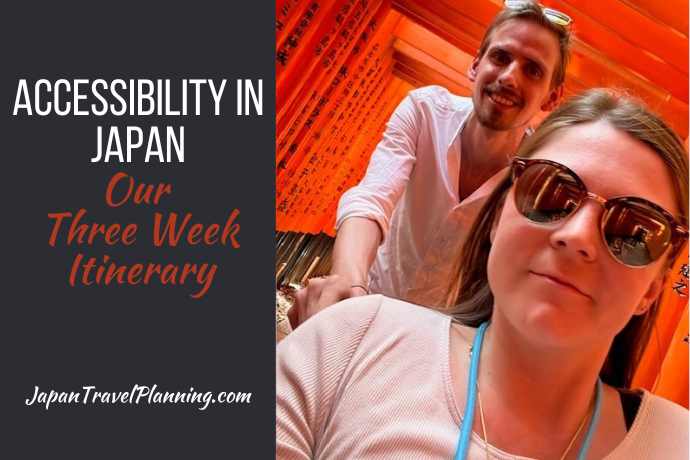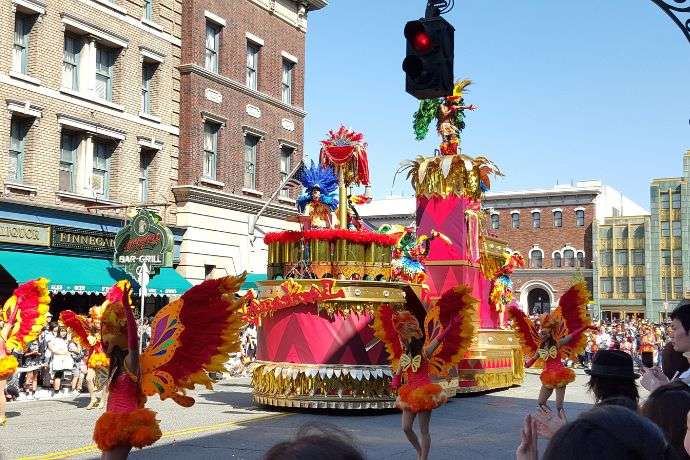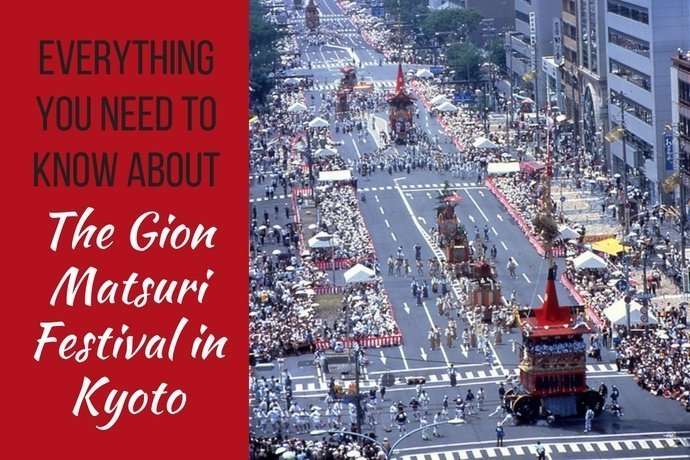The meaning of Matsuri is ‘festival’. Japan Matsuri can be both religious and secular celebrations. They are most notably sponsored by Shinto shrines, but there are also many festivals unrelated to shrines. Gion Matsuri in Kyoto is the festival of the Yasaka shrine. It is arguably the most well-known Japanese festival and one of the largest as well. The festival takes its name from Kyoto’s Gion district.
Below we have put together an overview of the Gion Matsuri Festival in Kyoto to help you plan your participation in this great event.
Join the Japan Travel Planning Facebook Group or Discord Server
You are also welcome to join our Japan Travel Planning Facebook Group and our Japan Travel Planning Discord Server – they are great resources to enable you to ask questions about your upcoming trip to Japan!
Disclaimer: This article contains affiliate links. If you book after clicking on one of these links then we may receive a small commission at no extra cost to you.
What is Gion Matsuri?
The Gion Matsuri festival has a history of over 1100 years old, having originated in 869 when it was performed as a ritual of purification to stave off the plague. The festival’s high points are the processions, called Yamahoko Junko, on the 17th and 24th July. Yamahoko (or Yamaboko) describes the two types of floats in the parade: the smaller ‘yama’ floats and the larger ‘hoko’ floats. They are made of ornately covered wood decorated with rich textiles and covered with hundreds of years old treasures. They are like portable museums paraded through the city streets of Kyoto. The floats are designated as Important Tangible Folk Cultural Property and the Yamahoka events are considered to be a UNESCO cultural heritage.
The smaller yama floats are about 6 metres tall and weigh about 1 200 kg. It takes a team of up to 24 people to pull them. The hoko floats are about 8 metres tall from ground to roof or about 25 metres tall when measured to the tip of the central poles. They weigh up to 12 000 kg (approx. 12 ton) with wheels that are almost 2 metres tall (over 6 feet) and can take a team of up to about 40 people to pull them. It is awe-inspiring to see them travel along the street, particularly when they take a 90 degree turn at street corners. The revelry is heightened by the musicians singing and chanting aboard the yama and hoko.
鶏鉾・月鉾.jpg)
When and Where is Gion Matsuri
Gion Matsuri is a month long festival. The main event or Saki (‘early’) Matsuri takes place on 17th July with a massive parade of 24 floats called the Yamahoko Junko. The procession starts from the Shijo-Karasama intersection at 9am. It then heads east along Shijo-dori (‘dori’ means ‘street’), then turns north along Kawaramachi-dori. The parade then turns west on Oiki-dori before finishing at the Oike-Karasama intersection at around 1pm. Click on this link for more information on Saki Matsuri including details of the floats.
There is also a smaller procession of 11 floats called the Ato (‘later’ or ‘after’) Matsuri on 24th July. It follows the same route as the Saki Matsuri but goes in the opposite direction. The Ato Matsuri starts at around 9:30am and finishes around noon. Click on this link for more information on Ato Matsuri including details of the floats.
Click on this link for route maps of both the Saki Matsuri and Ato Matsuri.
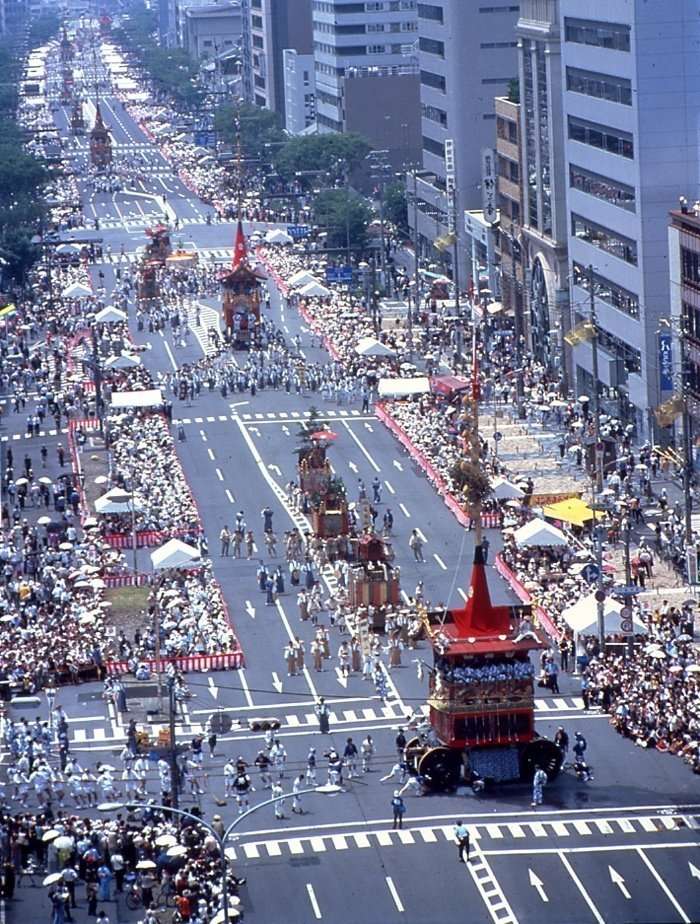
Yoiyama
Yoiyama, the pre-parties, are held in the 3 nights before each of the processions (14th-16th July and 21st-23rd July). On these nights, festival area streets are closed to traffic. These street parties are a terrific part of the Gion Matsuri experience. The street parties begin at around 6pm and finish at around 11pm each night. The streets get more and more crowded over the first two hours of each night and crowds begin to ease a little around 9pm. During the Yoiyama, the floats are on display. Many locals dress in their yakuta and if you want to join the fun you could rent a yakuta. There is also festival music filling the air and stalls selling great street food.
Another attraction during the Yoiyama is Byobu Matsuri. Families in the neighbourhood display their private treasures and works of art (such as screens and kimonos) to the public by putting them in their front rooms.
For a great insight into Japanese culture, if you are in or near Kyoto in July, make sure you take the time to be part of the Gion Matsuri experience.
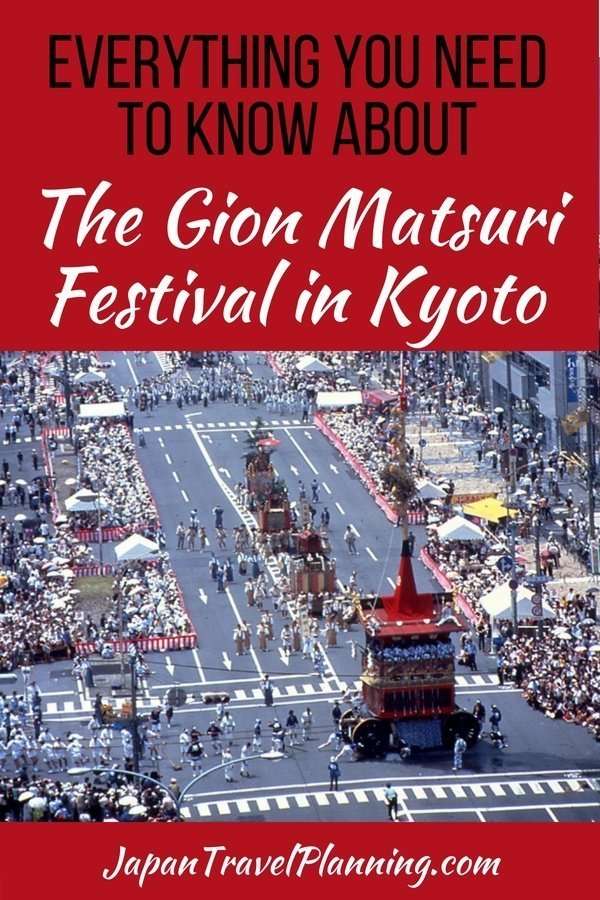
You may also like:
Accessibility in Japan: Our Three Week Itinerary
How to Get to Universal Studios Japan from Kyoto
FAQ: Everything You Need to Know About the Kyoto Gion Matsuri Festival
Join the Japan Travel Planning Facebook Group or Discord Server
You are also welcome to join our Japan Travel Planning Facebook Group and our Japan Travel Planning Discord Server – they are great resources to enable you to ask questions about your upcoming trip to Japan!
Disclaimer: This article contains affiliate links. If you book after clicking on one of these links then we may receive a small commission at no extra cost to you.


